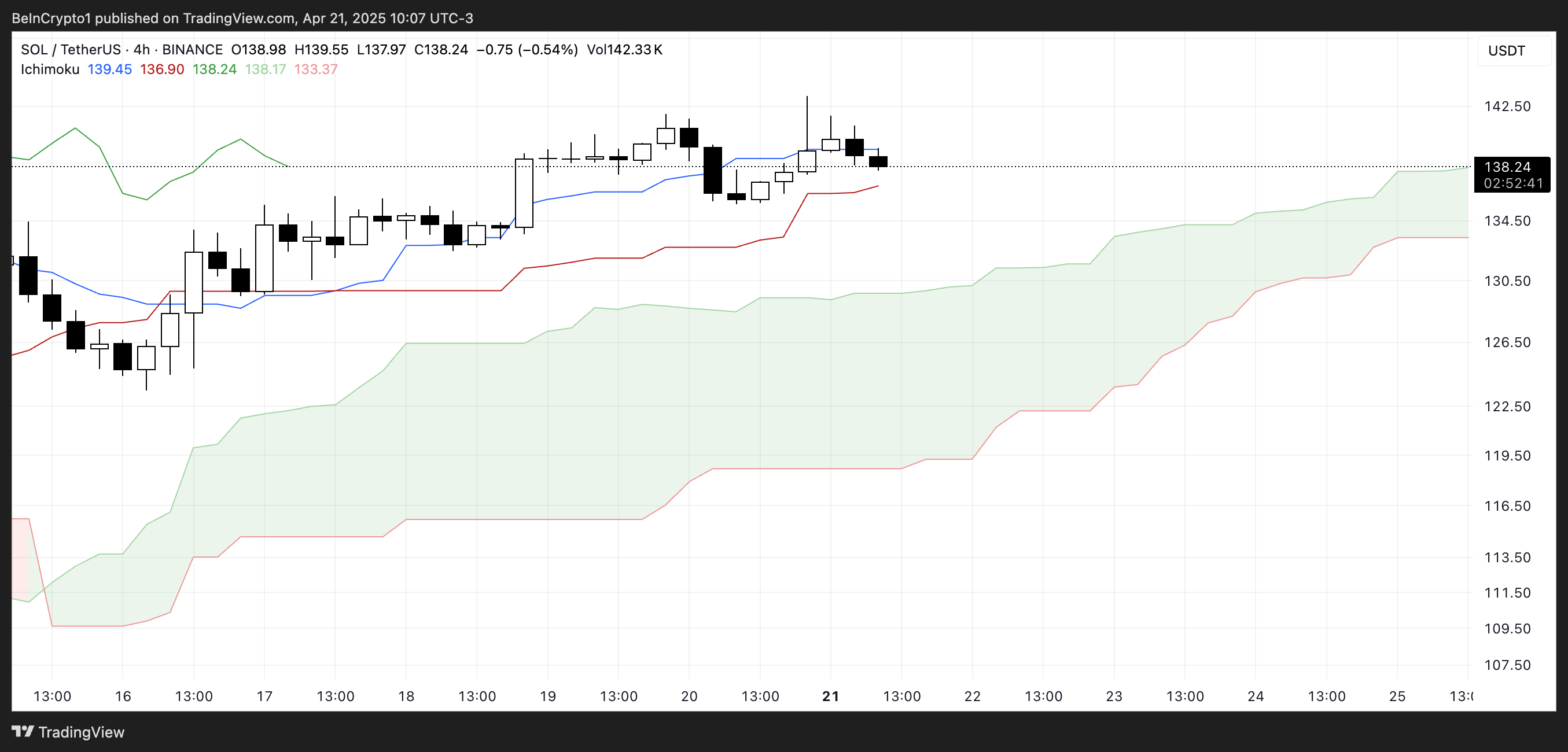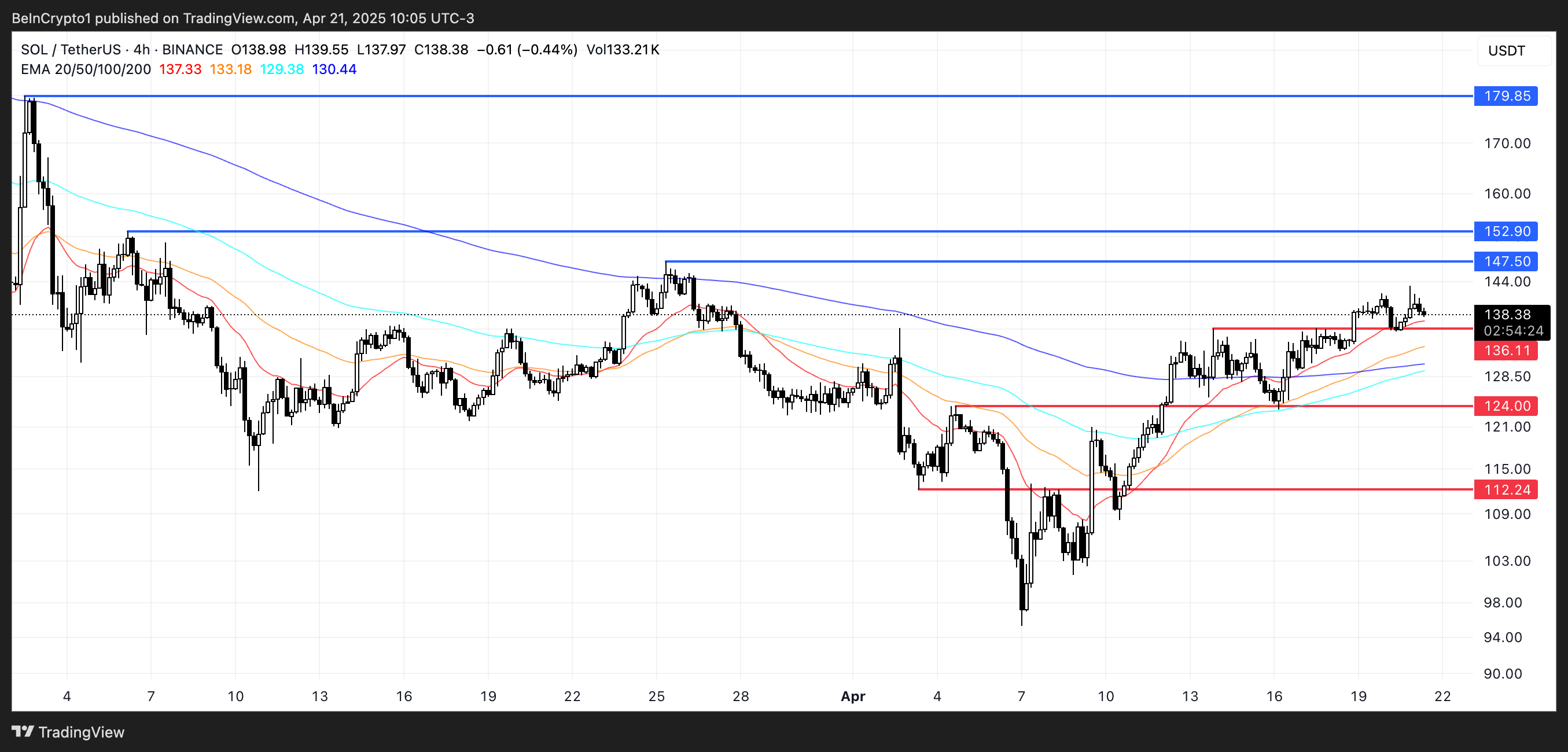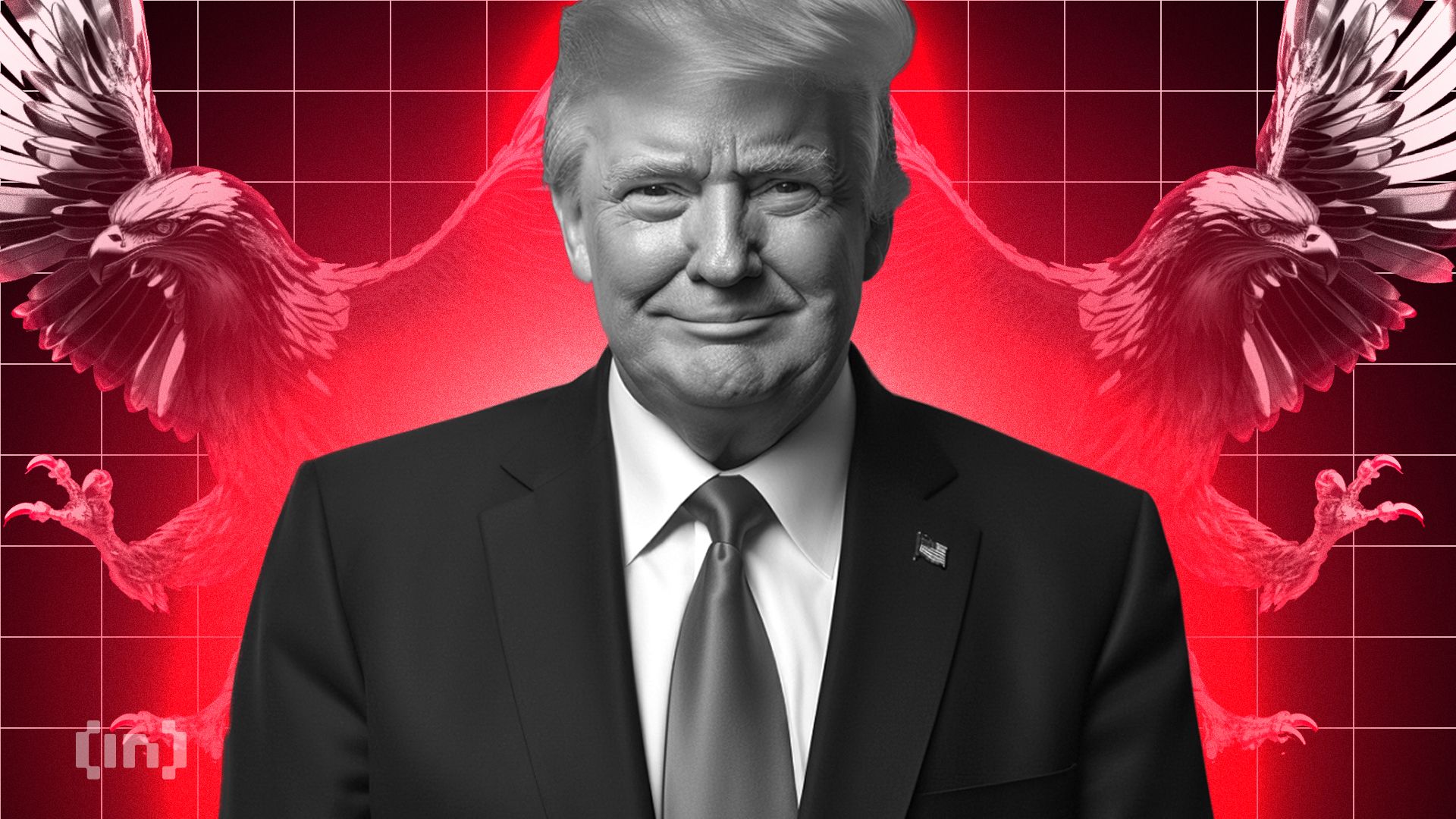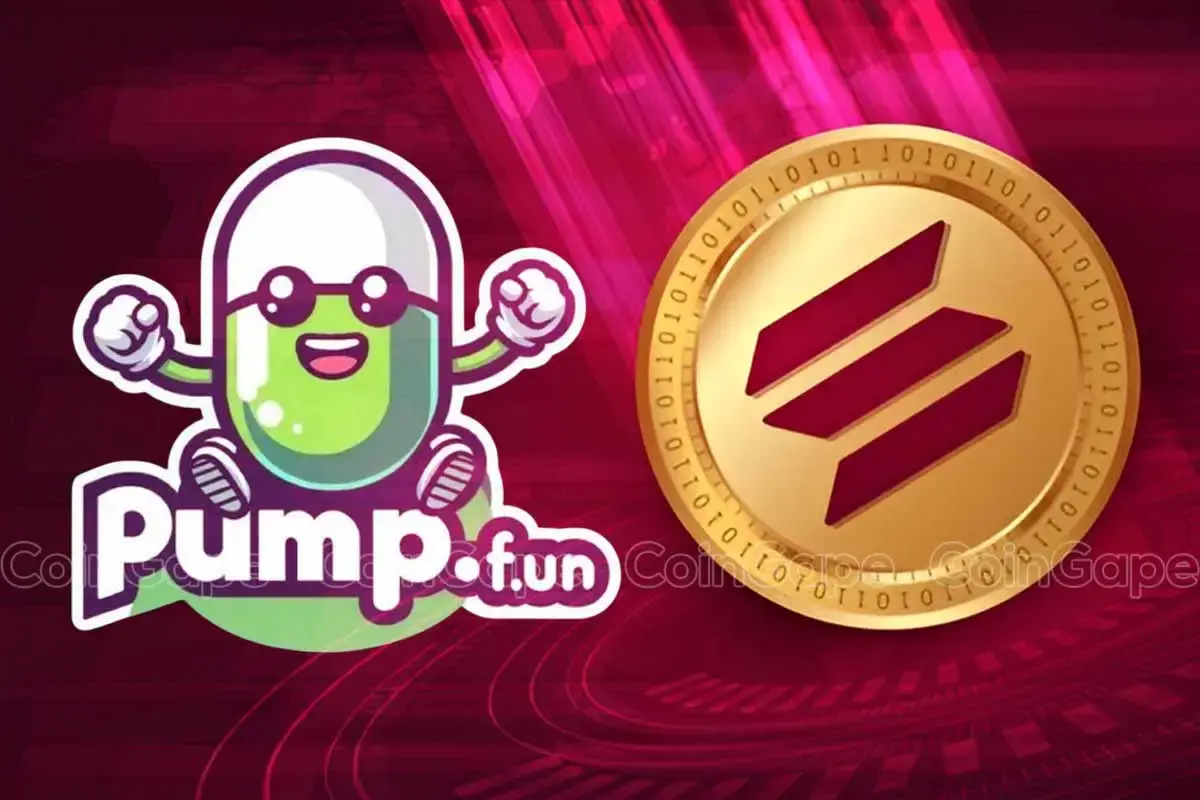Market
How CrossFi Is Creating a Seamless Payment Future


CrossFi, a blockchain solutions company, has launched its EVM-compatible mainnet with a bold mission: to reshape the future of global crypto payments. While the blockchain sector has seen unprecedented growth, CrossFi aims to solve one of its biggest challenges — bridging the gap between digital currencies and traditional financial systems. Their payment solution allows crypto to be seamlessly integrated into everyday life, offering the ability to use digital assets just as fiat currencies.
In an exclusive interview with BeInCrypto, CrossFi CEO Alexander Mamasidikov shared insights into the company’s origins, the obstacles they’ve faced along the way, and the unique approach they’ve taken to create a truly decentralized, efficient, and user-friendly payment system.
Solving a Major Problem in the Crypto Space
The company’s journey began by addressing a critical pain point for crypto users: how to spend digital assets. While many individuals were earning crypto, using it in real-world transactions remained challenging.
“We were earning crypto, but spending it was difficult. You had to make calls, take risks, or search for intermediaries to exchange it. At that time, the market was highly unstable, and many people were even jailed for exchanging, buying, or selling cryptocurrency,” Mamasidikov recalled.
These hurdles made it clear that there was a significant gap between the potential of cryptocurrencies and their practical applications. In response to this problem, CrossFi set out to build a payment solution that mimicked the convenience of fiat currencies, allowing users to spend crypto without the friction of converting it first.
“Our goal was to eliminate any noticeable difference between using cryptocurrency and traditional fiat money. Essentially, we wanted people to be able to use crypto in their daily lives just as easily as they use fiat, at any time. To achieve this, we developed a payment solution — a blockchain-based system — that facilitates smooth settlements between cryptocurrencies and fiat currencies,” he explained.
At its core, the solution offers users the ability to bridge the divide between cryptocurrencies and fiat, enabling payments to be processed as seamlessly as traditional financial transactions. Focusing on interoperability and ease of use, CrossFi has developed a system that caters to the everyday needs of crypto users while preserving the decentralization and security that are fundamental to blockchain technology.
The Revolutionary Payment System
One of CrossFi’s standout features is its blockchain-based payment system, which goes beyond mere conversion of crypto into fiat. Instead, the system allows users to spend cryptocurrencies directly without the need for intermediaries.
“We developed a unique blockchain settlement layer that facilitates peer-to-peer transactions between crypto and fiat, eliminating the need for third-party intermediaries,” Mamasidikov shared.
This system effectively ensures that the user experience remains seamless, even when transacting with digital currencies. Importantly, it preserves the decentralized nature of crypto, allowing users to maintain control of their funds while making payments. According to the Mamasidikov, this innovation is at the heart of CrossFi’s success.
A critical differentiator of CrossFi’s payment solution is its focus on non-custodial payments. While many crypto payment solutions require to transfer the funds to a third-party platform before spending them, CrossFi has eliminated this step.
“Most payment solutions are custodial, meaning you have to transfer your funds to an intermediary. We wanted to ensure that crypto users wouldn’t have to sacrifice control or security in order to use their assets in the real world. With us, you can use your MetaMask, Trust or other wallet directly, paying without ever moving your assets to a third party,” the CEO explained.
The focus on non-custodial payments strengthens the core principles of decentralization and user control, which lie at the heart of Web3. CrossFi’s system provides a unique level of freedom and flexibility that distinguishes it from competitors.
Additionally, the company has integrated its solution with traditional financial infrastructure, ensuring seamless interaction between crypto and fiat. This interoperability is essential to CrossFi’s vision of making digital assets as easy to use as traditional currencies.
New Level of Security
In addition to offering a decentralized payment experience, CrossFi has developed a highly secure system for protecting users’ assets. An impressive feature of the system is its card, which not only functions as a payment method but also serves as an encryption key for users’ wallets. This added layer of security ensures that transactions remain private and protected.
“When you use the card, it decrypts your wallet, allowing transactions to proceed. This means users must confirm transactions in MetaMask when shopping online, but when paying in person, the card itself handles the secure transfer,” Mamasidikov explained.
CrossFi’s approach to security goes beyond traditional methods, leveraging blockchain’s transparency and immutability to offer a level of protection that is difficult to achieve in fiat-based payment systems. The integration of cryptographic methods ensures that users’ funds and personal information are kept safe, even in the event of a cyberattack or data breach.
The company’s innovation, however, does not stop at payment systems. CrossFi has built an extensive blockchain infrastructure, providing a solid foundation for a wide range of decentralized financial services.
This includes their Automated Banking System (ABS), which is fully integrated with blockchain technology and traditional banking systems. The ABS allows CrossFi to provide the same level of efficiency, speed, and security as conventional financial institutions while maintaining the advantages of decentralized finance (DeFi).
“Our processing system is certified by PCI DSS, and we connect host-to-host with any bank or processor. This ensures that our users’ payment data and funds are always secure, and the system itself meets all regulatory standards,” the CEO elaborated.
Financial Products Designed for Crypto Users
The CrossFi ecosystem consists of six core components, with the CrossFi Chain, a Layer-1 blockchain, serving as its primary foundation. This blockchain underpins a range of innovative tools designed to support the seamless movement and utilization of digital assets.
Central to this ecosystem is the CrossFi xApp — a DeFi platform designed to empower users with a comprehensive suite of financial activities. It supports token swaps, asset bridging across numerous chains, and liquidity mining of native tokens like XFI and XUSD.
XStake is another crucial component, focused on maximizing the efficiency of staked assets. This omnichain meta-yield aggregator delivers the highest possible returns through vaults that deploy strategies across various networks. Its oracle system continuously monitors incentives and market conditions, autonomously rebalancing assets across chains and protocols.
“xStake is a multi-yield protocol that searches across 12 blockchains to find the best yield strategies available. It automatically rebalances and gives users the highest return. This makes XStake a user-friendly solution, eliminating the need for constant manual adjustments,” Mamasidikov explained.
Completing the system is XAssets, which provides exposure to traditional financial assets without leaving the crypto environment. Users can buy and sell these assets in real-time, with prices reflecting market fluctuations instantly. Additionally, the CrossFi Foundation, a nonprofit organization, is focused on promoting the platform’s development.
The CrossFi ecosystem operates on a technological foundation built with Cosmos SDK and Tendermint. The Cosmos SDK provides a customizable framework, allowing CrossFi to interact seamlessly with other blockchains.
Tendermint, a consensus algorithm, ensures the platform’s ability to process transactions with speed, security, and reliability. This combination of technology creates a versatile ecosystem tailored to meet the diverse needs of digital asset users.
A Full-Fledged Web3 Bank
At the core of CrossFi’s vision is the creation of a full-fledged Web3 bank. This bank will offer all the services of a traditional financial institution, but with the added transparency, security, and flexibility of blockchain technology. It’s designed to provide users with a range of financial services, including peer-to-peer lending, staking, and trading synthetic assets.
“We’re building a Web3 bank where users can not only spend crypto but also take advantage of financial services like peer-to-peer lending, staking, and investing in synthetic assets,” the CEO shared.
A key component of the Web3 bank is CrossFi’s stablecoin, XUSD. This stablecoin is fully backed and allows users to easily convert between various cryptocurrencies and fiat. XUSD offers the stability of fiat while maintaining the flexibility of crypto, making it a critical part of CrossFi’s ecosystem.
“XUSD can be minted from assets on 24 different blockchains with just one click. We’re preparing for a future where decentralized finance will be the norm, and people will control their funds independently,” Mamasidikov said.
While CrossFi is pushing the boundaries of blockchain technology, it is also acutely aware of the regulatory challenges. The company has taken steps to ensure that its platform complies with all relevant regulations, particularly in terms of Know Your Customer (KYC) and Anti-Money Laundering (AML) requirements.
“We’re compliant with all KYC and AML requirements. We’ve made sure that our systems align with traditional financial regulations while preserving the decentralization of crypto,” he stated.
CrossFi’s Vision for a Unified Payment System
Looking to the future, CrossFi’s primary goal is to facilitate the mass adoption by providing users with a seamless, frictionless experience.
“Our goal is to become the number one payment gateway between crypto and fiat. We want to give people who don’t have access to traditional banking systems the ability to manage their finances using crypto,” Mamasidikov emphasized.
CrossFi CEO also predicted that the upcoming crypto bull run would likely be the last one without strict regulations, as governments and financial institutions are starting to adopt blockchain technology.
“This will be the last unregulated bull run. Many smaller players will struggle as getting licenses and approvals becomes more difficult. Only the strongest and most compliant companies will survive,” he explained.
As CrossFi continues to develop its Web3 bank and expand its financial products, the company is in a strong position to lead the move toward mainstream blockchain-based financial services. The platform is designed to be secure and easy to use, making it a key player in the future of DeFi.
With the recent launch of its mainnet, CrossFi is already making a serious impact in the crypto industry. Their focus on innovation and giving users more control sets them apart, as they work to make crypto payments as common and accessible as traditional banking.
Disclaimer
In compliance with the Trust Project guidelines, this opinion article presents the author’s perspective and may not necessarily reflect the views of BeInCrypto. BeInCrypto remains committed to transparent reporting and upholding the highest standards of journalism. Readers are advised to verify information independently and consult with a professional before making decisions based on this content. Please note that our Terms and Conditions, Privacy Policy, and Disclaimers have been updated.
Market
Report Alleges Massive Meme Coin Sniping on Pump.fun

According to a new report from Pine Analytics, token deployers on Pump.fun systematically funded sniper wallets to buy their own meme coins. This impacted over 15,000 token launches on the platform.
These sniper wallets operated primarily during US trading hours, executing standardized, profitable strategies. Unrelated bot activity obscures their behavior, making it extremely difficult to isolate these wallets—and they can readily adapt to new countermeasures.
Snipers Roam Free on Pump.fun Meme Coins
Pump.fun has remained one of the most popular meme coin launchpads on Solana despite persistent controversies and other criticism.
However, Pine Analytics’ new report has uncovered a new controversy, discovering systematic market manipulation on the platform. These snipes include as much as 1.75% of all launch activity on Pump.fun.
“Our analysis reveals that this tactic is not rare or fringe — over the past month alone, more than 15,000 SOL in realized profit was extracted through this method, across 15,000+ launches involving 4,600+ sniper wallets and 10,400+ deployers. These wallets demonstrate unusually high success rates (87% of snipes were profitable), clean exits, and structured operational patterns,” it claimed.
Solana meme coin deployers on Pump.fun follow a consistent pattern. They fund one or more sniper wallets and grant them advance notice of upcoming token launches.
Those wallets purchase tokens in the very first block and then liquidate almost immediately—85% within five minutes and 90% in just one or two swap events.

Pump.fun meme coin developers exploit this tactic to create the appearance of immediate demand for their tokens. Retail investors, unaware of the prior sell‑off, often purchase these tokens after the snipe, giving developers an unfair advantage. This constitutes market manipulation and erodes trust in the platform.
Pine Analytics had to carefully calibrate its methods to identify genuine snipers. Apparently, 50% of meme coin launches on Pump.fun involve sniping, but most of this is probably bots using the “spray and pray” method.
However, by filtering out snipers with no direct links to developer wallets, the firm missed projects that covered their tracks through proxies and burners.
In other words, the meme coin community does not have adequate defenses against systematic abuse on Pump.fun. There are a few possible ways that the platform could flag repeat offenders and sketchy projects, but adaptive countermeasures could defeat them. This problem demands persistent and proactive action.
Unfortunately, it may be difficult to enact such policies. Meme coin sniping is so systematic that Pump.fun could only fight it with real commitment.
Analysts think that building an on-chain culture that rewards transparency over extraction is the best long-term solution. A shift like that would be truly seismic, and the meme coin sector might not survive it.
Disclaimer
In adherence to the Trust Project guidelines, BeInCrypto is committed to unbiased, transparent reporting. This news article aims to provide accurate, timely information. However, readers are advised to verify facts independently and consult with a professional before making any decisions based on this content. Please note that our Terms and Conditions, Privacy Policy, and Disclaimers have been updated.
Market
Solana Leads Blockchain Metrics as SOL Momentum Builds

Solana (SOL) continues to show strength across multiple fronts, maintaining a bullish structure on its Ichimoku Cloud chart while gaining momentum in key market metrics. The BBTrend indicator has turned higher again, signaling renewed buying pressure after a brief cooldown.
On-chain activity remains strong, with Solana leading all blockchains in DEX volume and dominating fee generation thanks to the explosive growth of meme coins and launchpad activity. With SOL now trading above a key resistance level, the path is open for further upside—though a loss of momentum could still trigger a retest of lower supports.
Solana Maintains Bullish Structure, but Momentum Faces Key Test
On Solana’s Ichimoku Cloud chart, the price is currently above the Kijun-sen (red base line) but has dipped below the Tenkan-sen (blue conversion line), signaling weakening short-term momentum.
The flattening Tenkan-sen and price behavior suggest possible consolidation or the early stages of a pullback. Still, with the price holding above the Kijun-sen, medium-term support remains intact.

The overall Ichimoku structure remains bullish, with a thick, rising cloud and leading span A well above span B—indicating strong underlying support.
If Solana finds support at the Kijun-sen and climbs back above the Tenkan-sen, the uptrend could regain strength; otherwise, a test of the cloud’s upper boundary may follow.

Meanwhile, Solana’s BBTrend is currently at 6, extending nearly ten days in positive territory after peaking at 17.5 on April 14. The recent increase from 4.26 to 6 suggests renewed bullish momentum following a brief cooldown.
BBTrend, or Bollinger Band Trend, tracks the strength of price movement based on Bollinger Band expansion.
Positive values like the current one point to an active uptrend, and if the BBTrend continues to rise, it could signal stronger momentum and potential for another upward move.
Solana Dominates DEX Volume and Fee Generation as Meme Coins Drive Ecosystem Growth
Solana has once again claimed the top spot among all chains in DEX volume, recording $15.15 billion over the past seven days. The combined total of Ethereum, BNB, Base, and Arbitrum reached $22.7 billion.

In the last 24 hours alone, Solana saw $1.67 billion in volume, largely fueled by its booming meme coin ecosystem and the ongoing launchpad battle between PumpFun and Raydium. Adding to this good momentum, Solana recently surpassed Ethereum in Staking Market Cap.

When it comes to application fees, Solana’s momentum is just as clear. Four of the top ten fee-generating apps over the past week—PumpFun, Jupiter, Jito, and Meteora—are Solana-focused.
Pump leads the pack with nearly $18 million in fees alone.
Solana Breaks Key Resistance as Uptrend Targets Higher Levels, but Risks Remain
Solana has finally broken above its key resistance at $136, flipping it into a new support level that was successfully tested just yesterday.
Its EMA lines remain aligned in a bullish setup, suggesting the uptrend is still intact.
If this momentum continues, SOL price could aim for the next resistance zones at $147 and $152—levels that, if breached, open the door to a potential move toward $179.

The current structure favors buyers, with higher lows and strong support reinforcing the trend.
However, if momentum fades, a retest of the $136 support is likely.
A breakdown below that level could shift sentiment, exposing Solana to deeper pullbacks toward $124 and even $112.
Disclaimer
In line with the Trust Project guidelines, this price analysis article is for informational purposes only and should not be considered financial or investment advice. BeInCrypto is committed to accurate, unbiased reporting, but market conditions are subject to change without notice. Always conduct your own research and consult with a professional before making any financial decisions. Please note that our Terms and Conditions, Privacy Policy, and Disclaimers have been updated.
Market
Crypto Firms Donated $85 million in Trump’s Inauguration

According to a new report, 15 firms and individuals from the crypto industry donated more than $100,000 to President Trump’s Inauguration, totaling over $85 million.
Almost all of these companies apparently received direct or indirect benefits from Trump’s administration. This includes dropped legal proceedings, lucrative business partnerships, participation in Trump’s Crypto Summit, and more.
Crypto Industry Went All-In on Trump’s Inauguration
Since promising to bring friendlier regulations on the campaign trail, Donald Trump attracted a reputation as the Crypto President.
Trump’s Inauguration festivities included a “Crypto Ball,” and several prominent firms made donations for these events. Today, a report has compiled all crypto-related contributions of over $100,000, revealing some interesting facts.

Since taking office, President Trump and his family have been allegedly involved in prominent crypto controversies, and these donations may be linked to several of them.
For example, eight of the donors, Coinbase, Crypto.com, Uniswap, Yuga Labs, Kraken, Ripple, Robinhood, and Consensys, had SEC investigations or lawsuits against them closed since Trump’s term began.
The commission might have dropped its probe against these companies anyway due to its changing stance on crypto enforcement. However, being in the President’s good books likely helped the process.
Further Alleged Benefits for Donors
In other words, nearly half the firms that made donations to Trump’s Inauguration have seen their legal problems cleared up quickly. This isn’t the only regulation-related benefit they allegedly received.
Circle, for example, recently made an IPO after openly stating that Trump’s Presidency made it possible. Galaxy Digital received SEC approval for a major reorganization, a key step for a NASDAQ listing.
Other donors, such as Crypto.com and ONDO, got more direct financial partnerships with businesses associated with the Trump family.
Previously, Ripple’s CEO, Brad Garlinghouse, anticipated a crypto bull market under Trump. Also, XRP, Solana, and Cardano were all unexpectedly included in the US Crypto Reserve announcement.
All three of these companies made major donations to Trump’s Inauguration.
It seems that most of the firms involved got at least some sort of noticeable benefit from these donations. Donors like Multicoin and Paradigm received invitations to Trump’s Crypto Summit, while much more prominent groups like the Ethereum Foundation got snubbed.
Meanwhile, various industry KOLs and community members have already alleged major corruption in Trump’s crypto connections.
While some allegations might lack substantial proof, the crypto space has changed dramatically under the new administration, for both good and bad.
Disclaimer
In adherence to the Trust Project guidelines, BeInCrypto is committed to unbiased, transparent reporting. This news article aims to provide accurate, timely information. However, readers are advised to verify facts independently and consult with a professional before making any decisions based on this content. Please note that our Terms and Conditions, Privacy Policy, and Disclaimers have been updated.
























